Please keep in mind I use local clay that has been refined by the local pottery club, so my results may differ from yours depending on the clay you are using and how you fire it.
Materials:
Container
clay
vinyl tubing
rolling pin
clay carver
silicone
grout
drill and bits
Take your clay and work it in your hands a bit (to get rid of any air bubbles and make it more workable). Kneading it like bread works well.
Use a rolling pin to roll a flat section about 2.5+ cm thick. Cut out a piece big enough to fit in your container. Keep in mind clay will shrink as it dries, my clay shrinks by 5-15% depending on the batch and moisture level.
I used two techniques for carving:
1. I carved the tunnels/holes right after rolling it out and laid it on a flat tray, covered it lightly in plastic and put a light book on it to keep it flat while it dried for the next 4 weeks.
2. I put a book on the rolled clay and let it dry for 2 weeks to a "leather" state (faintly damp, but much harder/stiffer). Then I carved the tunnels and drilled the holes. I lightly covered it in plastic and put the back on top to let it dry for 2 more weeks.
Obviously, the second technique worked much better as the first one had a tendency to warp while drying.
Here it is drying while wrapped in plastic with a book on top:
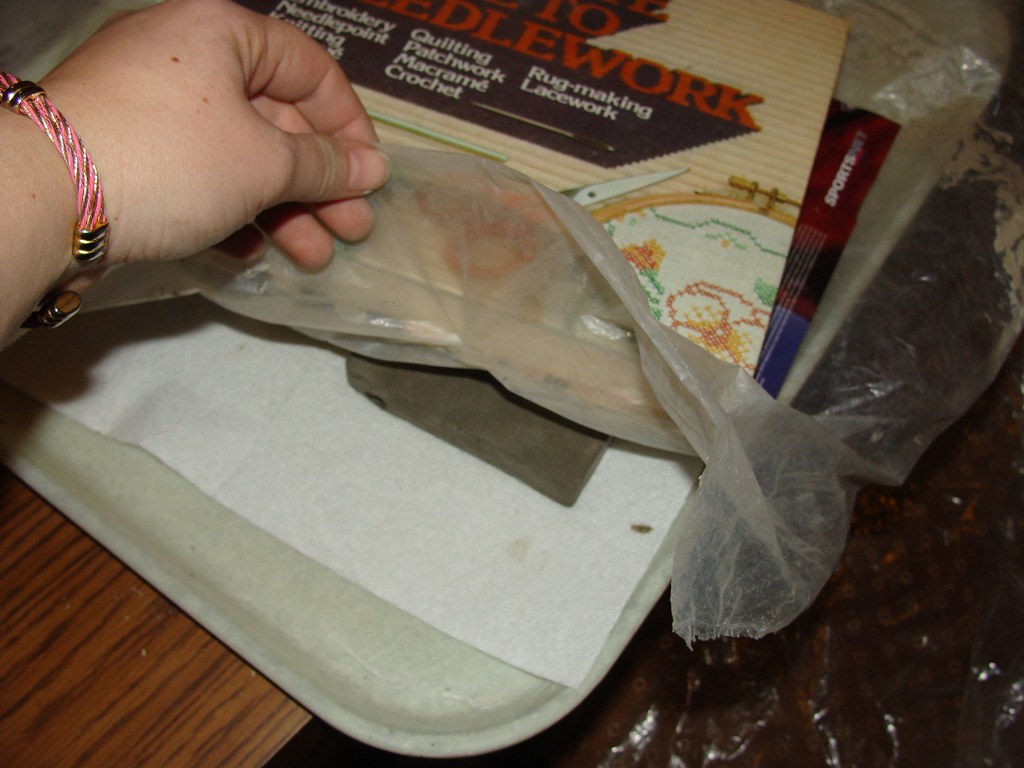
Here is the 2 week mark: #1 technique does not look very good as the clay shrinks as it dries (it originally looked as good as #2 did when it started to dry). I am currently carving the #2 technique.
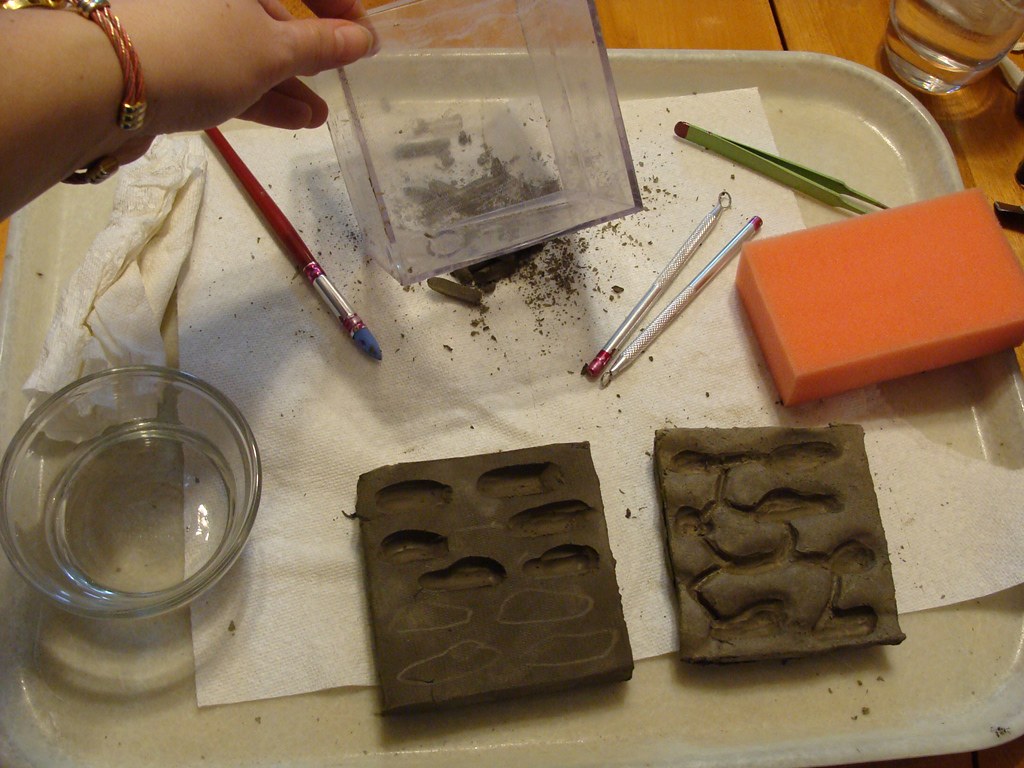
Here is how I carved #2 technique. I carved out room and tunnels and smoothed them out with a damp sponge (Use a damp sponge, and do not "sand" it - the dust is extremely dangerous to breathe in).
I used an awl to make a hole in the back to connect an additional tunnel. I used two different sized awls for different sized holes. You can use whatever tool works for you. The outer edge was large enough for my tubing, but I used a pin to check depth so I only had a smaller hole actually leading to the main tunnels.
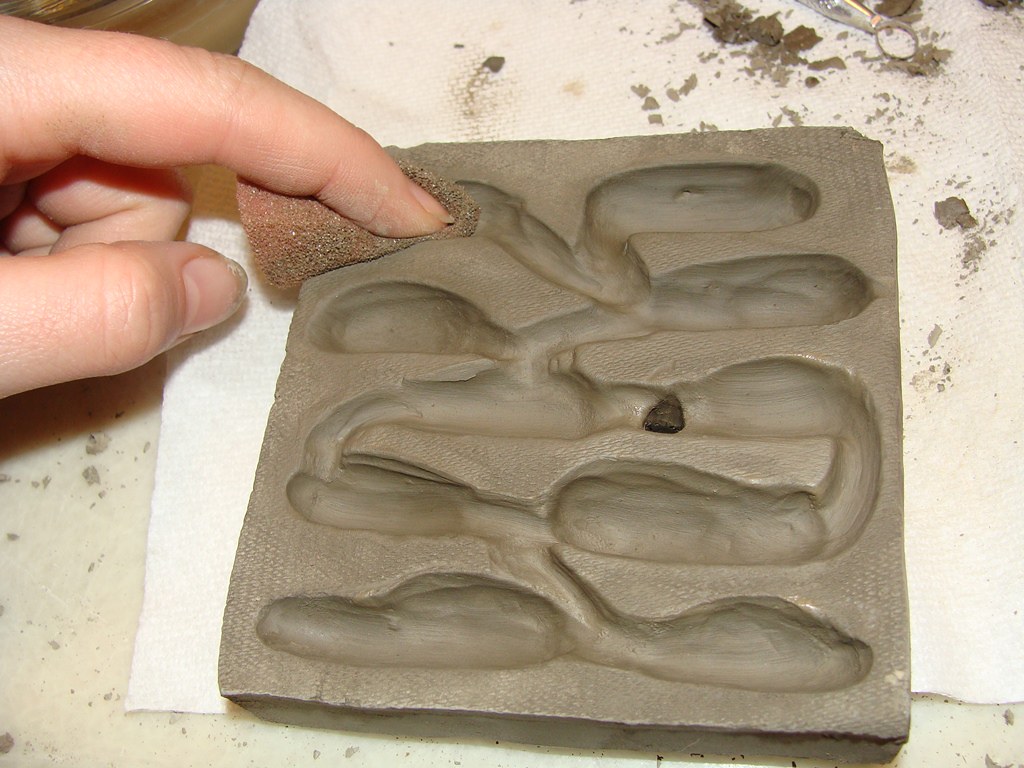
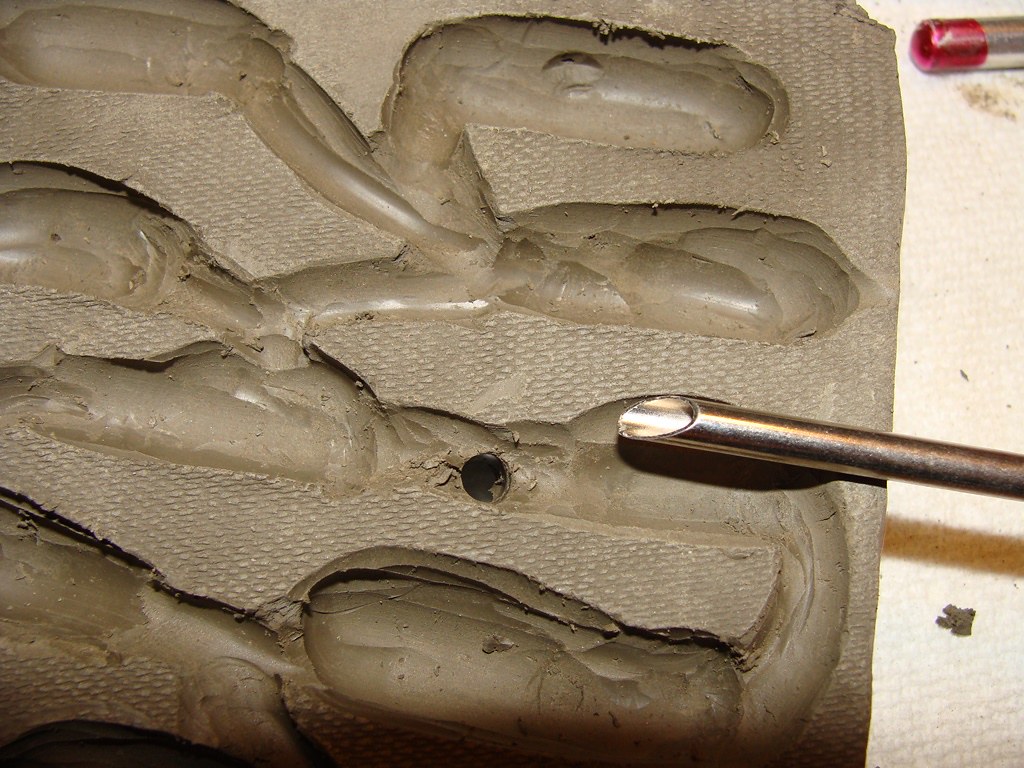
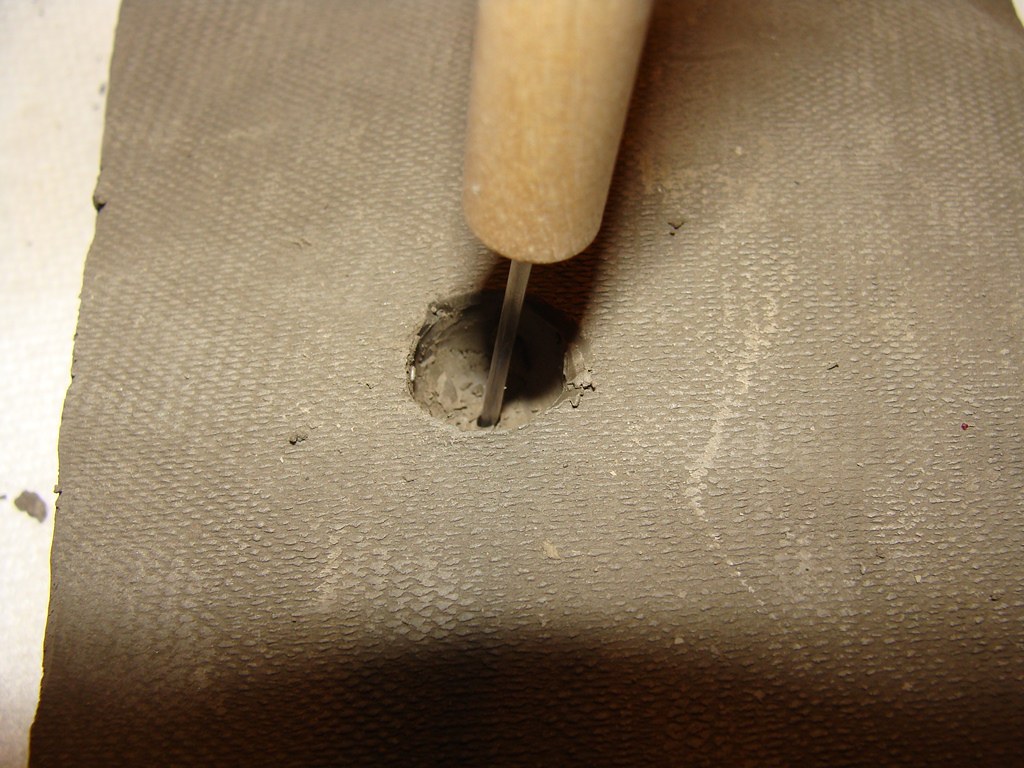
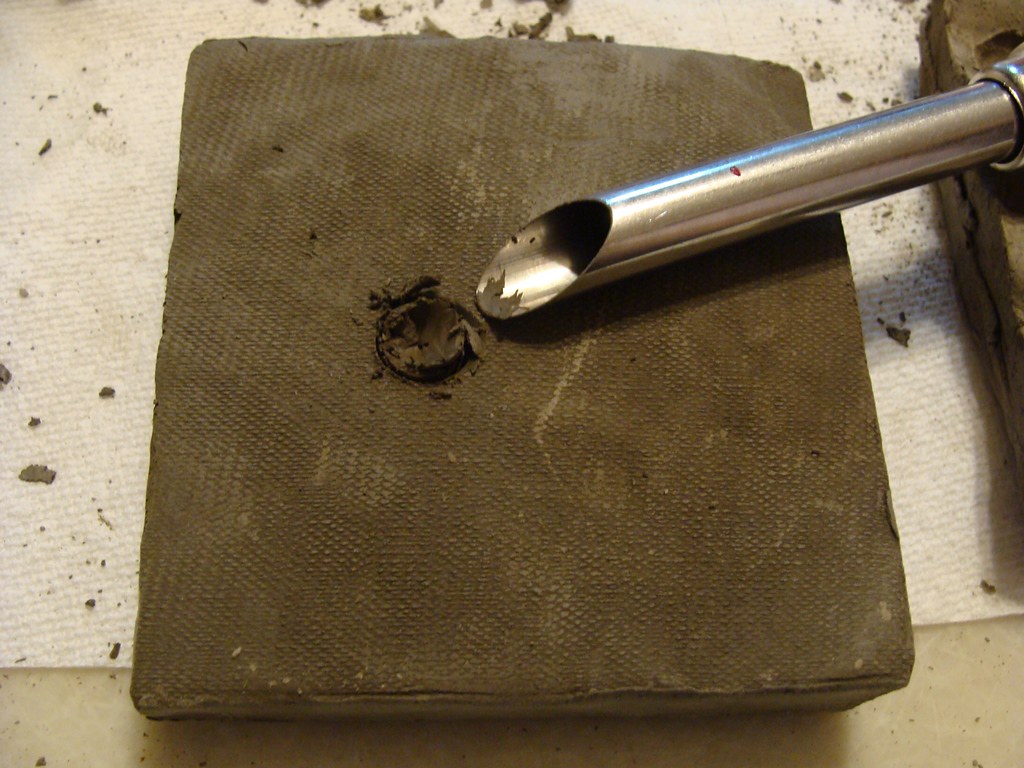
After the clay has dried, re-carve the hole for the silicone tubing as it may have shrunk with the drying. Go carefully as the dry clay is quite fragile.
Use a damp sponge to smooth any sharp edge. Also ensure that it fits inside of your container, if not, scrape the edge away until it does fit. Once fired, it is very hard to make any changes.
Well, they fit, albeit snuggly. Make sure you mark on the back which way faces up.
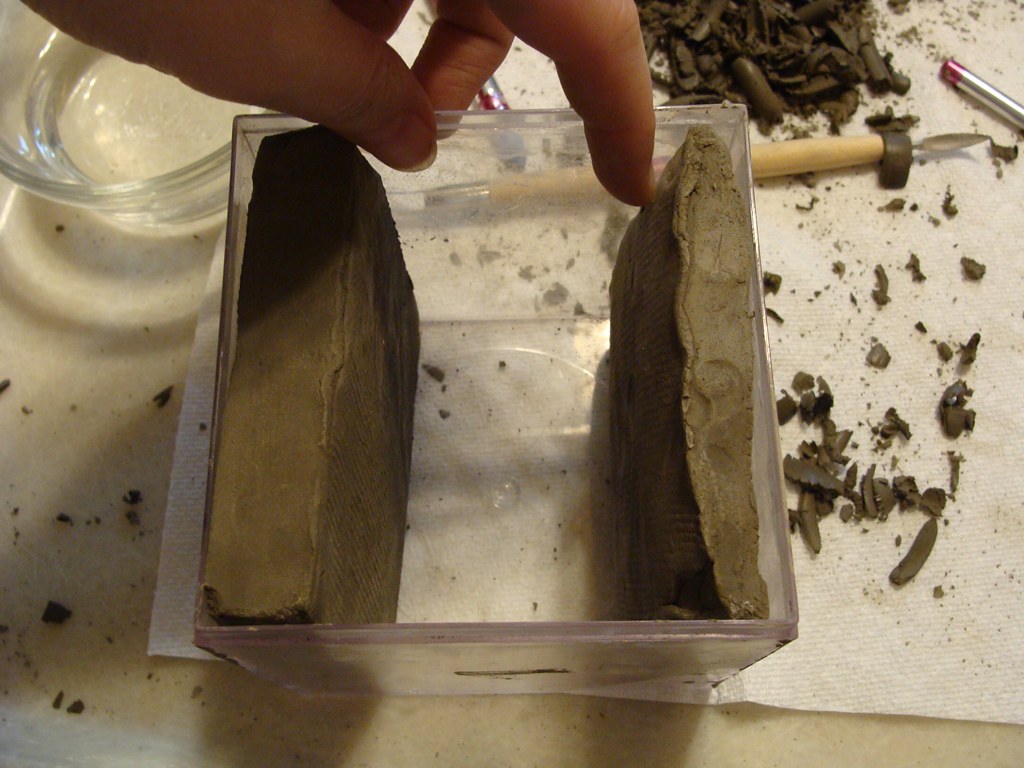
Let it dry again and fire it into bisque. Use a low or mid firing (Cone 08-1 depending on your specific clay - ask the manufacturer if it was purchased, or a local pottery club if using local clay), avoid firing it above cone 7. If you don't understand the kilning process, get someone experienced to do it for you.
This will give you a clay that is more absorbent than the typical cheap clay terracotta flower pot.
Note: clay that is air dried, or just baked in an oven will easily re-hydrate into wet clay that ants will easily dig through - it is not true pottery bisque. It needs to actually be fired to the point where clay changes into bisque. This is at least 900-1000C (1652-1832F). Some places will fire your clay for a fee, or you can buy a small kiln. I have seen clay fired inside of a long burning bonfire, but this is not feasible for most. Many places have pottery clubs with kilns.
Here is another chart showing kiln temperatures and important notes about then (a simpler version than the link above).
Soak the bisque for a few minutes and let it dry until it is no longer cold/cool to the touch. (If you skip this step, most glue/silicone will not bond to the clay for some reason)
Notice the final difference between technique 1 & 2 in the end: #1 is on the left, #2 on the right. Believe it or not, they started out almost the same thickness when rolled.
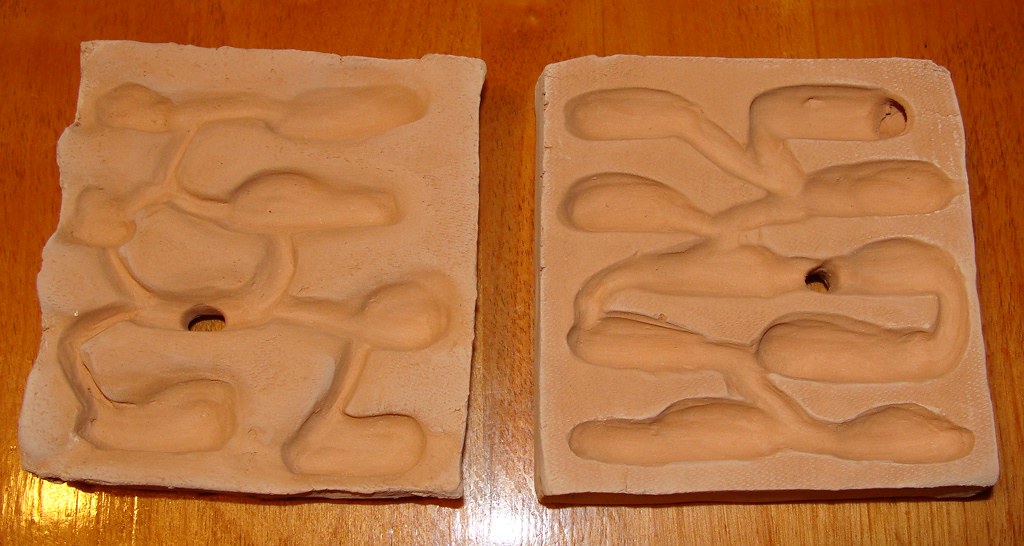
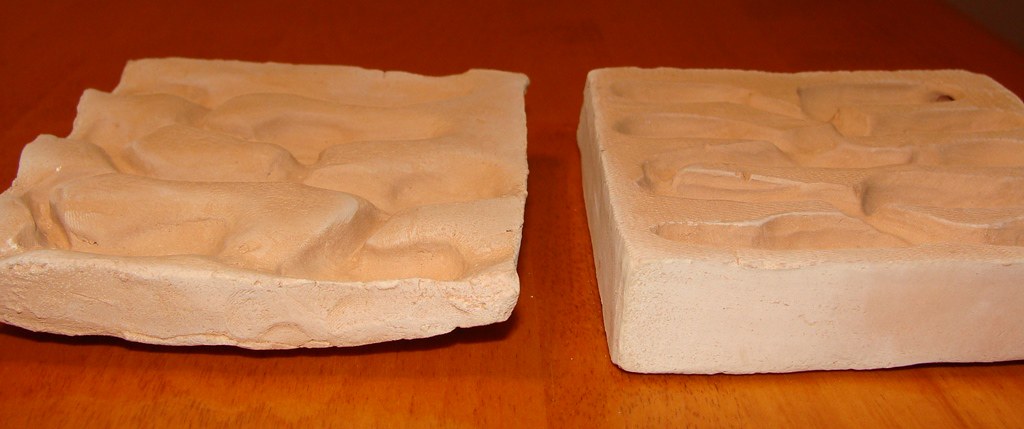
I ensured that my vinyl tubing fit as it was supposed to and was cut to size.
You can drill a hole into the nest, or if it is a vertical nest, ensure the opening will be where it is needed.
I decided to connect 2 of mine through the backs, it would be easy to do this to all 4 sides with an external foraging area.
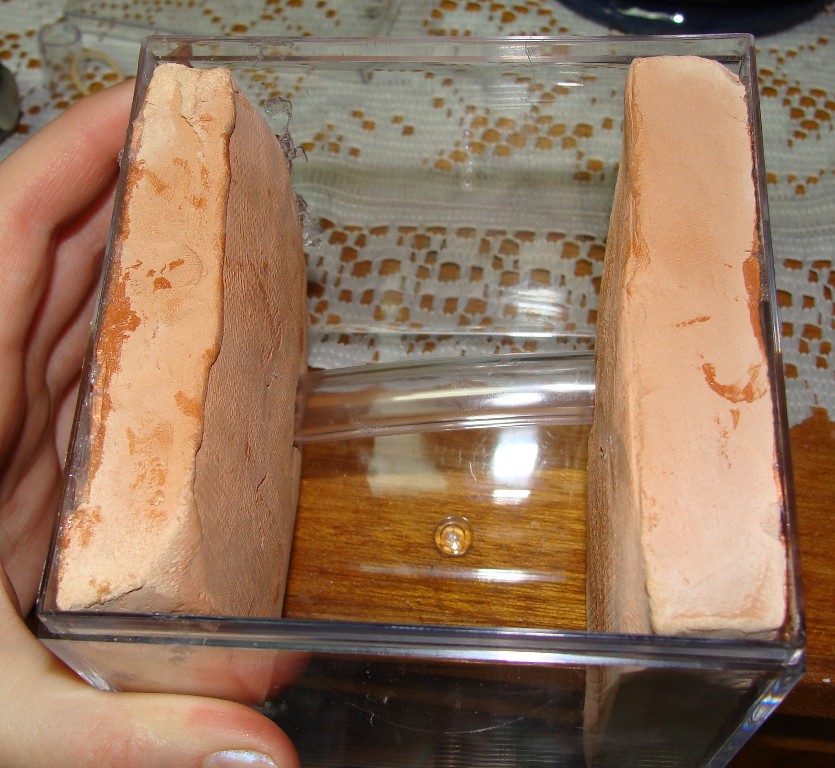
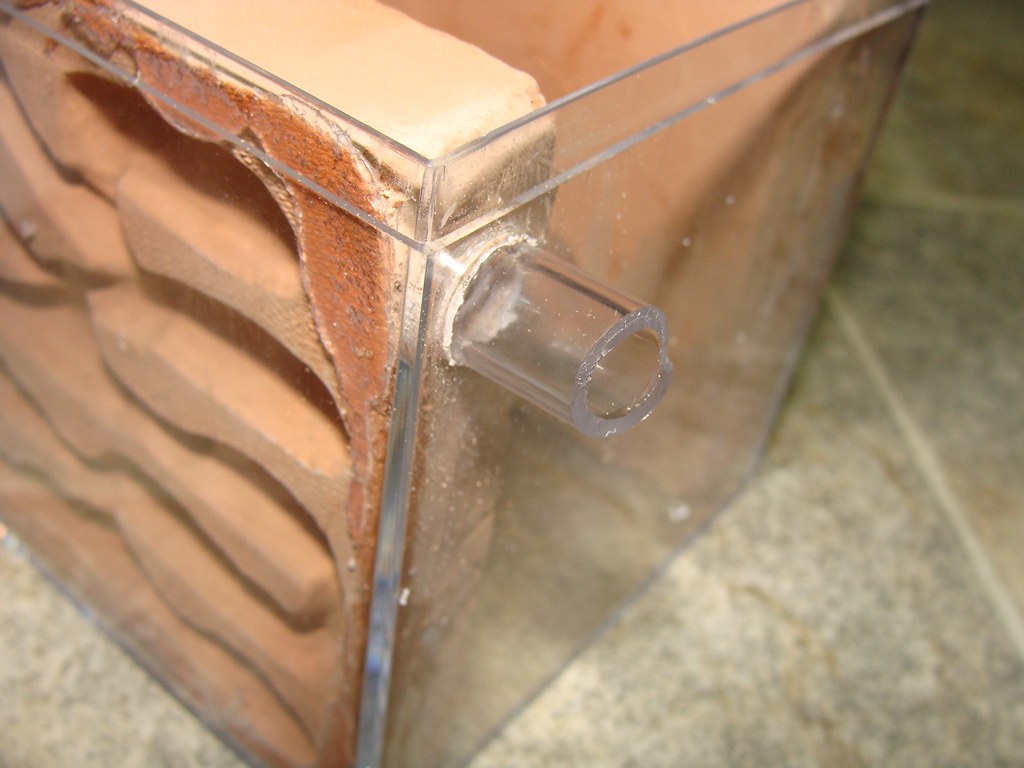
Take your bisque and silicone it against the wall. If there is a water chamber, ensure there is silicone between it and the other tunnels to avoid floods. For technique 1, I siliconed all points that were supposed to touch the wall since it warped so badly. I did not want ants or brood getting stuck between the nest and wall. This was not necessary with the #2 technique.
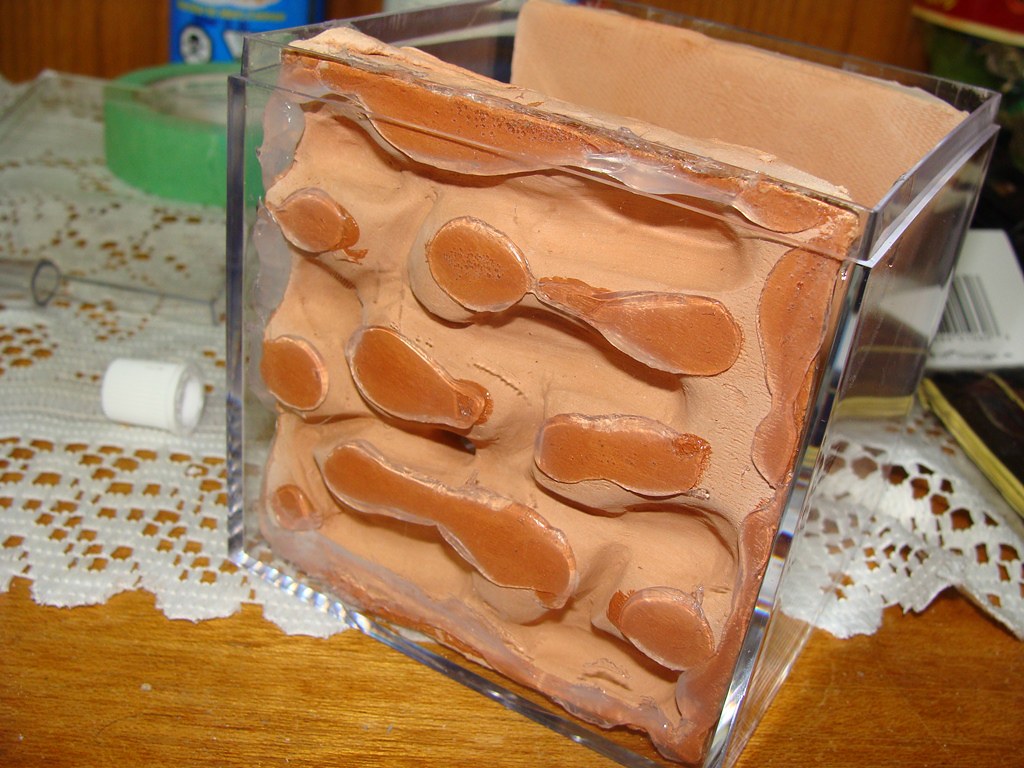

If needed, ensure any other vinyl tubing fits correctly, epoxy it in place if possible. (Silicone has too much give).
Backfill with grout (sanded or unsanded would work, mix 2 grout:1sand). Can also back fill with sand or gravel as long as ants can not get to it. Even adding stuff like styrofoam pieces to reduce amount of grout would work and make it lighter. Hydrostone may expand and crack the container when curing, and Plaster of Paris may mold, so avoid these two.
Ensure you do not forget to add a tunnel to water the nest. I used a piece of vinyl tubing.
One with as much grout as mine will take a long time to cure. I plan to put it on a shelf for a couple of months to ensure it is totally cured. (If the grout is not cured, it can kill ants and I prefer to play it safe).
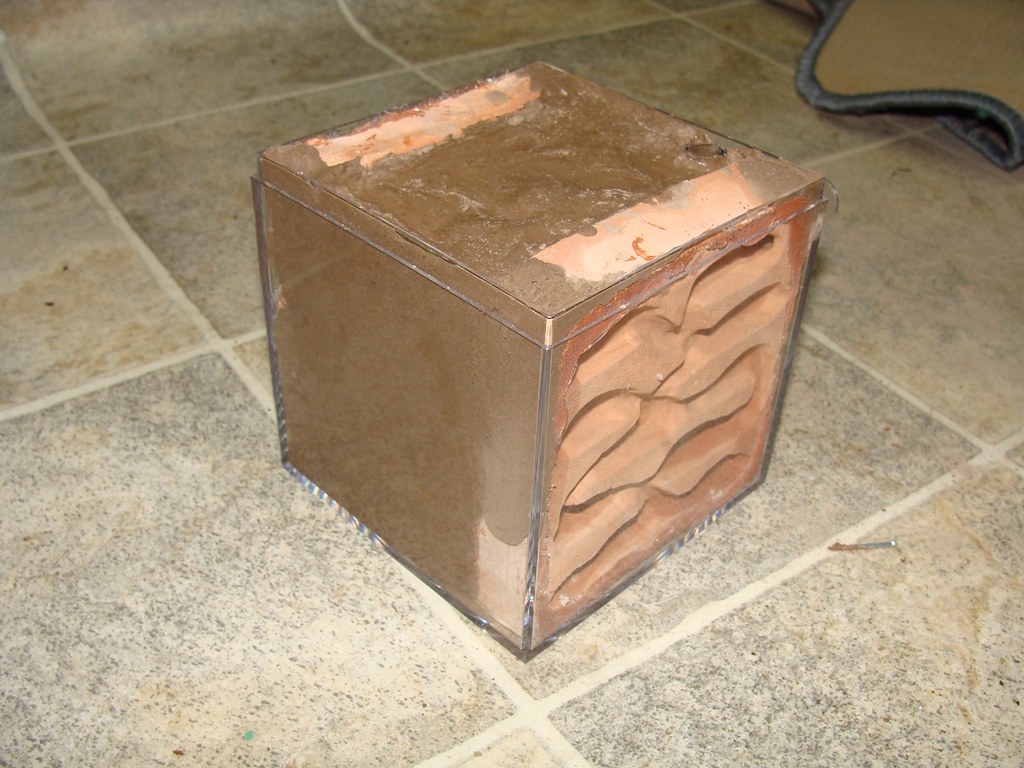
This is a different one, done by someone else - it was made out of clay, siliconed to the side, had gravel added behind and topped with plaster. I would probably use grout instead of plaster to avoid mold.

Edited by Crystals, August 1 2017 - 6:08 PM.

























